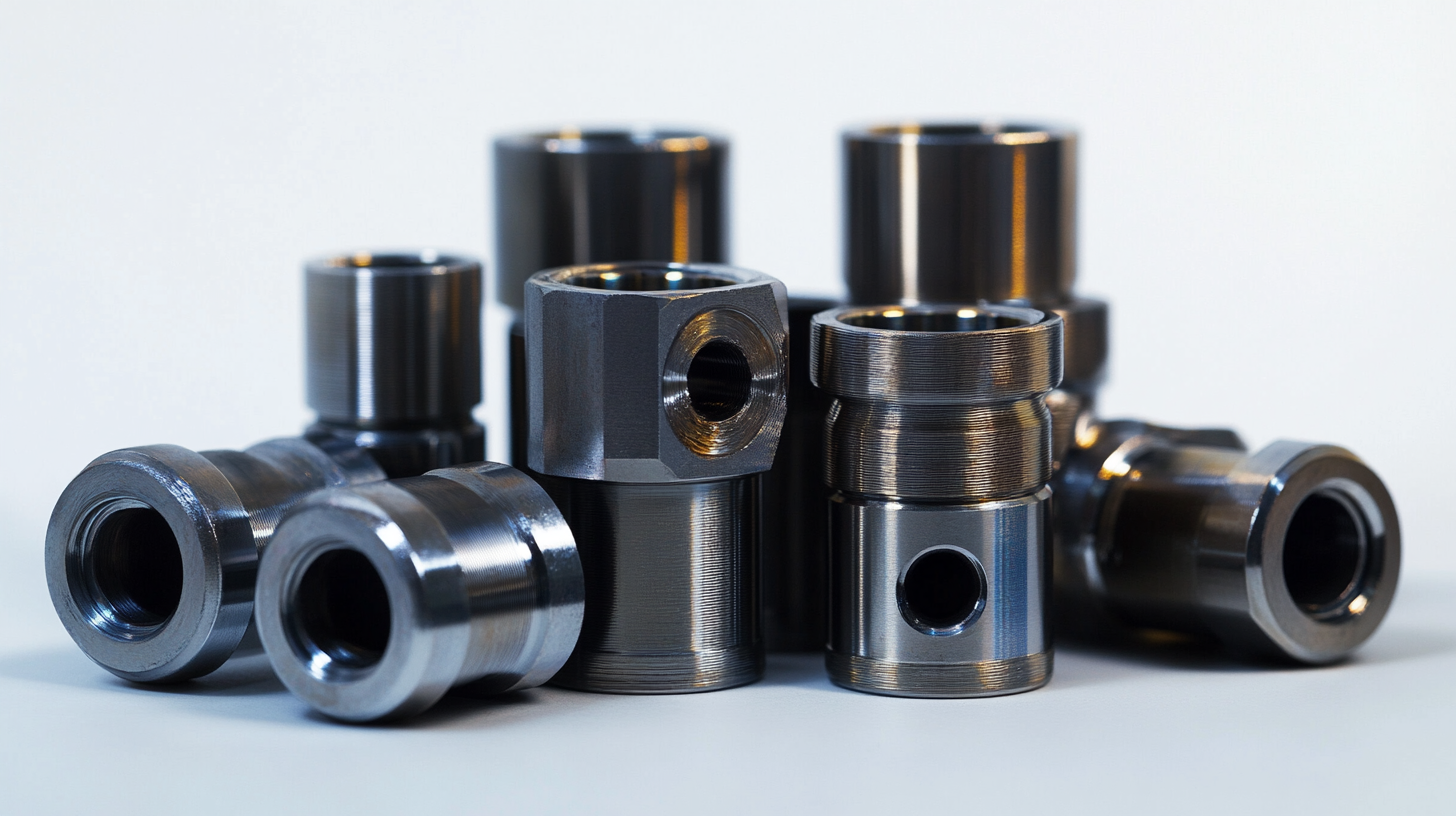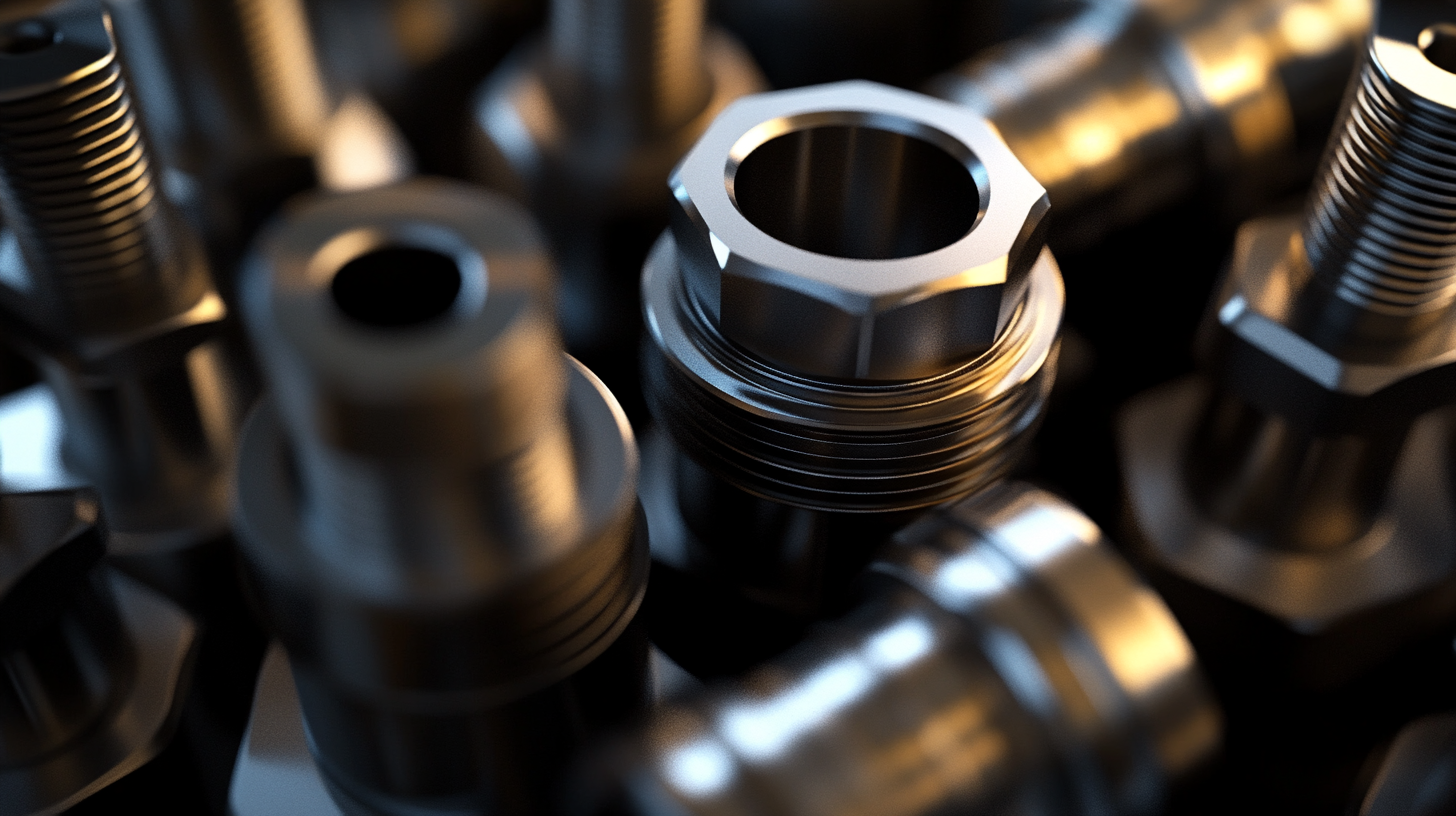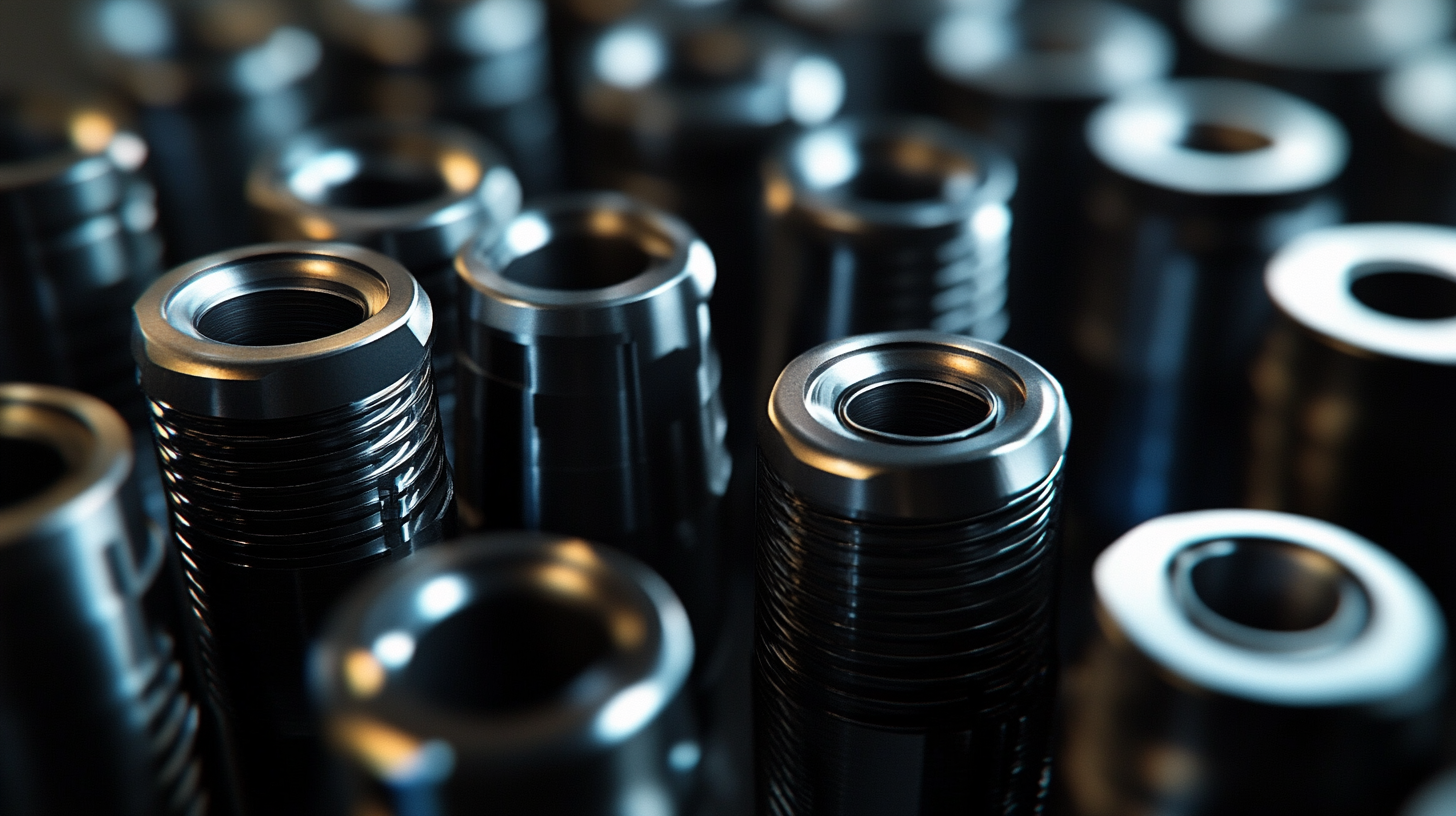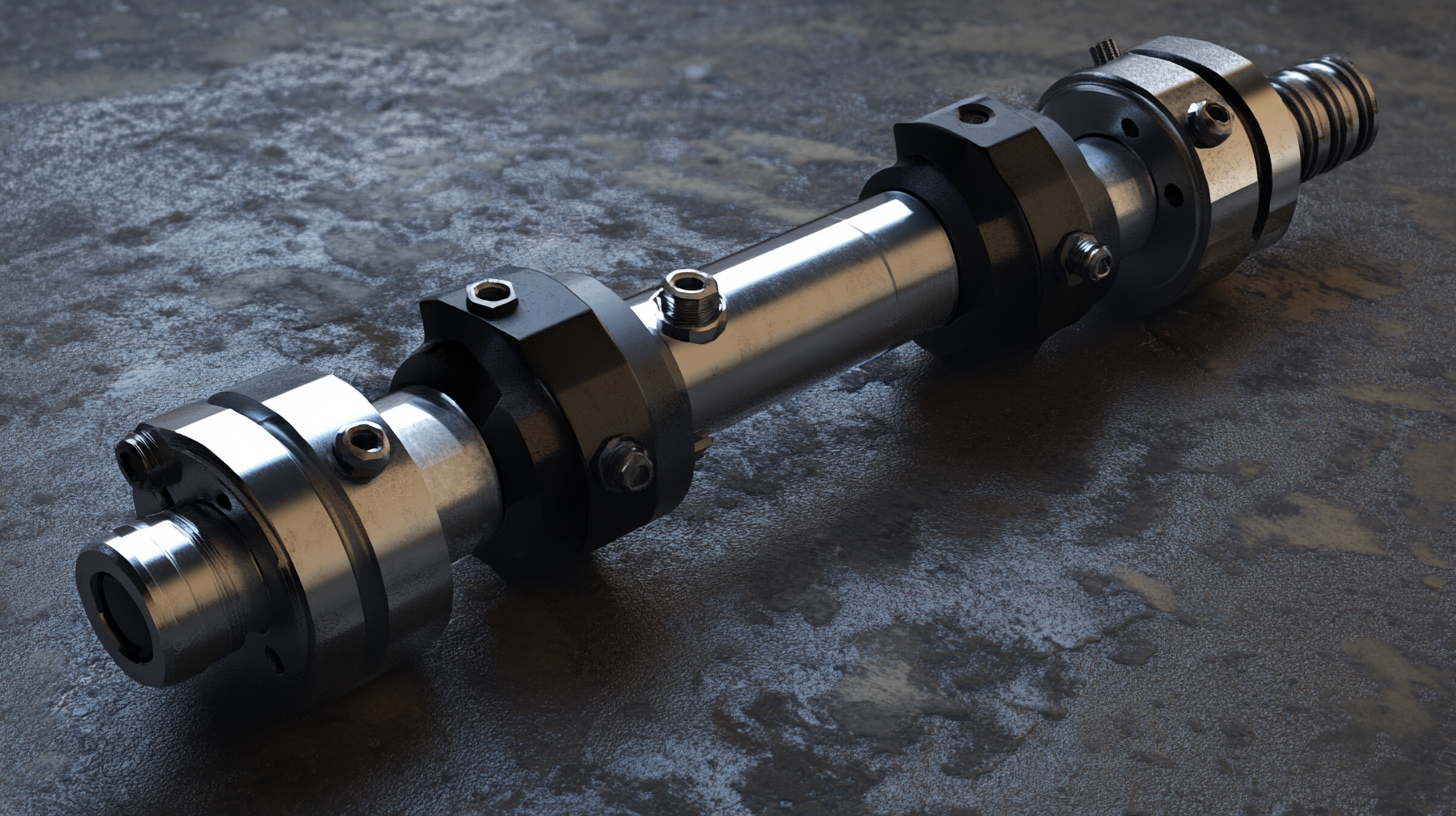Empowering Engineering Excellence: Innovate, Elevate, Deliver.
In today’s rapidly evolving industrial sector, the effectiveness of machinery and equipment often hinges on the quality of components utilized, particularly hydraulic systems. Hydraulic fittings, critical for ensuring the integrity and efficiency of hydraulic systems, play a vital role in various applications, ranging from construction and manufacturing to agriculture and aerospace. According to a report by Research and Markets, the hydraulic fittings market is projected to reach USD 3.5 billion by 2026, growing at a CAGR of 4.1%. This significant growth underscores the increasing demand for reliable, high-performance hydraulic components that enhance operational efficiency and safety.
The advantages of using hydraulic fittings extend beyond mere functionality; they also contribute to significant cost savings and improved productivity in industrial operations. A well-designed hydraulic fitting can minimize potential leaks, reduce maintenance downtime, and extend equipment lifespans, translating into increased profitability for businesses. Additionally, a survey by the Fluid Power Educational Foundation highlighted that industries adopting advanced hydraulic technologies, including higher-grade fittings, reported up to a 30% improvement in operational effectiveness. As industries continue to advance toward automation and enhanced performance, the strategic choice of hydraulic fittings will undoubtedly remain a pivotal aspect of industrial success.

Hydraulic fittings serve as crucial components in various industrial applications, enhancing the overall efficiency of hydraulic systems. These fittings establish robust connections between hoses, pipes, and other liquid transmission elements, ensuring minimal leakage and maximum fluid flow. When hydraulic systems operate smoothly, they require less energy to maintain pressure, thereby reducing energy consumption and overall operational costs. One of the key benefits of utilizing hydraulic fittings is their ability to withstand high pressure and extreme conditions. This durability means that industries can maintain consistent performance under demanding circumstances, which is especially important in sectors like manufacturing, construction, and automotive. By minimizing downtime caused by leakage or connection failures, businesses can improve productivity and maintain schedules more effectively. Moreover, the precision engineering of hydraulic fittings contributes to enhanced system responsiveness. The efficient transmission of hydraulic fluid translates to quicker operation of machinery, which is vital for processes requiring swift and accurate movements. Consequently, this improvement in responsiveness not only accelerates production rates but also enhances the quality of the finished products, as machinery operates within optimal parameters. In summary, the adoption of high-quality hydraulic fittings can bring significant advantages, leading to greater efficiency and productivity in industrial settings.

Hydraulic fittings play a crucial role in ensuring the durability and reliability of hydraulic systems, especially in extreme industrial conditions. Reports indicate that systems using high-quality hydraulic fittings show significantly reduced failure rates, with some studies suggesting improvements of up to 30% in equipment longevity. This enhancement can be attributed to the robust materials and precise engineering that go into the design of hydraulic fittings, which are specifically crafted to withstand high pressures, temperatures, and corrosive environments.
One of the standout features of hydraulic fittings is their ability to maintain performance under thermal and mechanical stress. For instance, according to the International Fluid Power Society, hydraulic fittings are designed to endure pressures exceeding 3,000 psi, making them suitable for operations in industries such as oil and gas, mining, and manufacturing where extreme conditions are commonplace. Additionally, the use of advanced sealing technologies in hydraulic fittings has been shown to minimize leakage, thus maintaining system integrity and enhancing operational efficiency.
Furthermore, the reliability of hydraulic fittings is reflected in empirical data from industry experts, which shows that systems equipped with high-performance fittings can lead to a 15% increase in productivity due to less downtime from failures. The combination of durability and reliability not only ensures consistent operation but also contributes to cost savings by reducing the frequency of maintenance and replacements. As industries continue to push the limits of technology, investing in superior hydraulic fittings becomes essential for achieving peak performance in extreme applications.

The cost-effectiveness of using hydraulic fittings in industrial applications is becoming increasingly apparent as companies seek to improve efficiency and reduce expenditures. With the global hydraulic hose and fittings market projected to grow significantly in the coming years—specifically by USD 581.3 million from 2025 to 2029—it's clear that businesses are recognizing the long-term savings and benefits that these components deliver. The shift towards more energy-efficient and electrified hydraulic systems, especially in applications like loader cranes, showcases the constant evolution and modernization of hydraulic technologies. Such advancements not only lower operational costs but also enhance safety and efficiency.
Moreover, the transition from traditional spiral hydraulic hoses to braided hoses highlights practical cost savings while maintaining performance. The braided design not only reduces weight, making equipment easier to handle but also offers higher pressure capabilities. As industries move towards more innovative and sustainable practices, adopting high-quality hydraulic fittings is becoming essential. This strategic investment not only maximizes resource utilization but also aligns with growing demands for efficiency in production environments, further justifying their implementation over time.

The versatility of hydraulic fittings in various industrial applications cannot be overstated. Hydraulic fittings are essential components that facilitate the connection of hoses and tubes in hydraulic systems, ensuring seamless operation across multiple sectors. According to recent market analysis, the hydraulic hoses market is projected to grow significantly, reaching an estimated value of $12 billion by 2025, primarily driven by increased demand from industrial machinery, construction, and the automotive sector. This growth raises the profile of hydraulic fittings, as they are integral to maintaining system integrity and performance.
Hydraulic fittings play a vital role in applications ranging from manufacturing to agriculture. Their ability to withstand high pressures and diverse environmental conditions makes them suitable for various tasks, from heavy-duty machinery to precision equipment. Industry reports highlight that the versatility of these fittings extends to different materials, including steel, brass, and thermoplastics, allowing for customization based on specific operational demands. This adaptability is further enhanced by the growing trend toward automation and advanced manufacturing techniques, which require reliable hydraulic connections.
Furthermore, the ongoing advancements in design and materials technology are contributing to the evolution of hydraulic fittings. As industries prioritize efficiency and safety, the development of leak-free, high-performance fittings becomes imperative. A recent study revealed that improperly fitted hoses can account for up to 50% of hydraulic downtime, emphasizing the importance of selecting the right hydraulic fittings to ensure reliable operations. This increasing awareness underscores the pivotal role that hydraulic fittings play not only in efficiency but also in reducing operational costs across various industrial applications.
Hydraulic fittings are critical components in industrial applications, providing essential connections in systems that operate under high pressure. One of the most significant benefits of using appropriate hydraulic fittings is the enhancement of safety in equipment operations. According to a report by the Hydraulic Industry Manufacturers Association (HIMA), nearly 60% of hydraulic system failures can be attributed to improper fittings and connections. This statistic emphasizes the importance of precise fitting usage in preventing leaks and catastrophic failures that may jeopardize both equipment and worker safety.
Proper installation and selection of hydraulic fittings can significantly reduce risks associated with hydraulic system malfunctions. A study by the National Institute for Occupational Safety and Health (NIOSH) highlighted that workplaces utilizing correct fittings experienced a 30% reduction in workplace injuries related to hydraulic machinery. This improvement underscores how adherence to industry standards in fitting specifications can create a safer working environment. Furthermore, using high-quality materials in fittings minimizes the chances of corrosion and wear, prolonging system longevity and reliability.
Additionally, safety improvements extend beyond individual harnessing; they contribute to operational efficiency. According to the International Fluid Power Society (IFPS), leaking fittings not only create hazardous working conditions but also lead to increased operational costs — with estimates suggesting companies lose upward of $1,000 per frequent hydraulic failure incident. By investing in durable hydraulic fittings, industries can ensure smoother operations and lower maintenance costs while prioritizing worker safety.